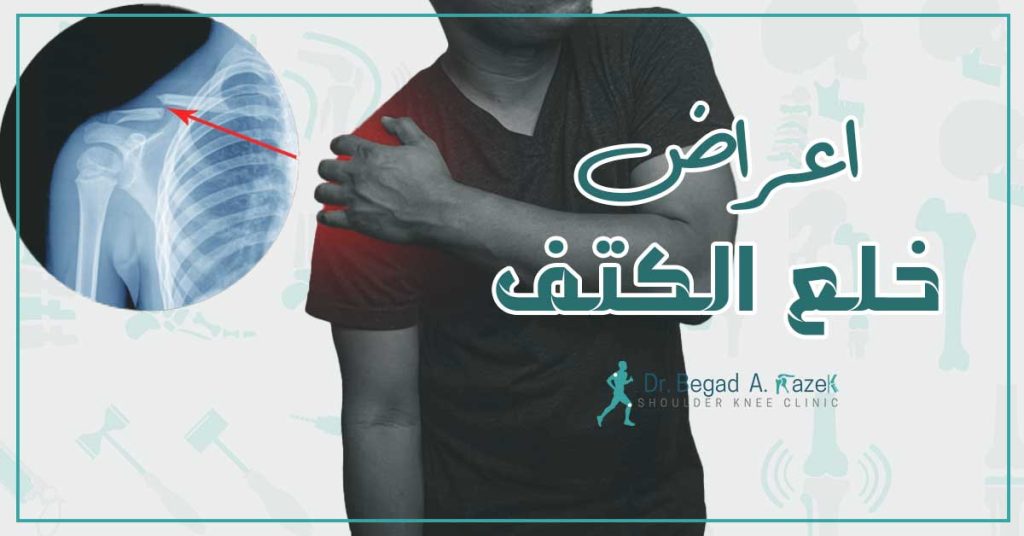
Shoulder dislocation is a condition that occurs when the shoulder becomes separated from its normal place in the shoulder joint. Shoulder dislocation may occur as a result of an acute injury, such as a hard fall on the shoulder or an accidental force on the shoulder. Shoulder dislocation is a painful condition and can cause restricted movement of the shoulder and arm.
Common symptoms of shoulder dislocation include:
- Sharp pain: The patient may feel sharp pain in the affected shoulder. The pain may be severe and increases when trying to move the shoulder or arm.
- Swelling and bruising: Swelling and bruising may occur in the area surrounding the affected shoulder as a result of a strong impact.
- Instability: The patient may feel instability in the shoulder, as the shoulder is unable to remain in its normal position and may slip or move freely.
- Reduced range of motion: The patient may have difficulty moving the shoulder and arm normally. Movement may be limited and painful.
If you think you have dislocated your shoulder, you should seek immediate medical care. A dislocated shoulder may require realignment by a skilled medical professional, usually done in a hospital or medical clinic. After the shoulder is realigned, the patient may be placed in a splint or brace to help stabilize the shoulder and promote the healing process. The doctor may also recommend physical therapy to strengthen the muscles and restore normal movement of the shoulder after healing.
Causes of shoulder dislocation
There are several possible causes of shoulder dislocation, including:
- Sports injuries: Shoulder dislocation can occur as a result of sports injuries, such as vigorous contact sports such as football, basketball, and combat sports. Shoulder dislocation may occur as a result of the shoulder being exposed to an emergency force or bearing excessive weight on it.
- Falls: Falling on the shoulder is one of the common causes of shoulder dislocation. When a person falls on the shoulder hard, the shoulder may move out of its normal place and a dislocation occurs.
- Accidents and accidental injuries: Shoulder dislocation may occur as a result of traumatic accidents such as car accidents or falls from a height. The force caused by these accidents can cause the shoulder to separate from its normal position.
- Weakness of the ligaments and surrounding tissues: In some cases, the shoulder may be more susceptible to dislocation if the ligaments and surrounding tissues are weak or flabby. These weaknesses can be genetic or the result of previous injuries.
- Shoulder instability: Shoulder instability can be a causative factor in shoulder dislocation. In this condition, the ligaments surrounding the shoulder are weak or abnormally stretched, increasing the possibility of a shoulder dislocation.
Shoulder dislocation should be diagnosed and treated by a qualified medical professional. The doctor may order additional tests such as X-rays or MRI to evaluate the condition of the shoulder and determine the appropriate steps for treatment and rehabilitation.

Shoulder dislocation treatment
When a shoulder dislocation is diagnosed, the appropriate treatment is determined according to the severity of the injury and the type of dislocation. Treatment options may include the following:
- Shoulder realignment (Reduction): The shoulder is realigned by a skilled medical professional. Certain techniques are applied to return the shoulder to its natural position. This can be done manually or with a gradual device that applies force to return the joint to its correct position.
- Splint: After the shoulder is realigned, the shoulder may be placed in a splint to support and stabilize it. The splint helps reduce excess movement and relieve pressure on the affected shoulder. This procedure gives the shoulder time to heal.
- Physical therapy: After a period of rest and splinting, you may be directed to physical therapy sessions. Physical therapy will strengthen the muscles surrounding the shoulder and restore the normal range of motion. Physical therapy will also help you regain strength and stability in the shoulder.
- Surgery: In severe or recurrent shoulder dislocations, surgery may be necessary. Surgery involves repairing damaged ligaments or reconstructing the joint. The need for surgery is determined based on the doctor’s evaluation and response to other treatments.
Remember that you must consult a specialist doctor to evaluate your condition and direct you to the appropriate treatment. Treatment depends on several factors, including the severity of the dislocation, history of previous injuries, and general shoulder condition.

